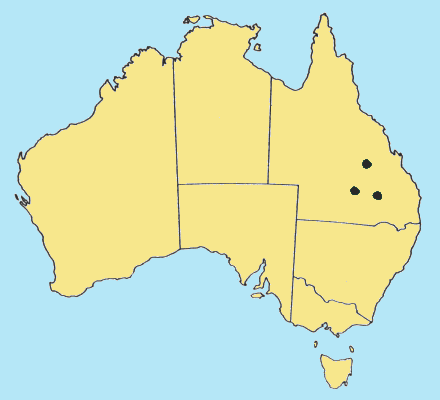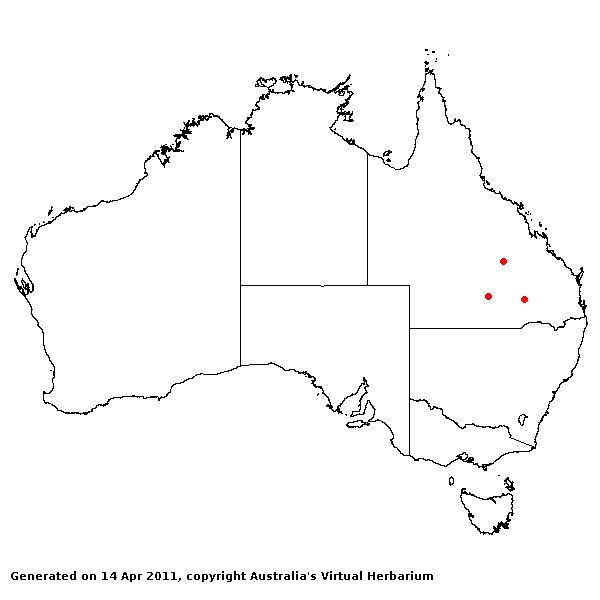Dactyloctenium giganteum* B. S. Fisher &
Schweickerdt. Ann. Natal Mus. 10: 53 (1941).
Classification. (GPWG 2001) : Subfamily Chloridoideae. Cynodonteae.
Type of Basionym or
Protologue Information: NAMIBIA:
Grootfontein, Schoenfelder 1018 (HT: NH).
Key references
(books and floras): [2002] D.Sharp & B.K.Simon, AusGrass, Grasses of
Australia.
Habit. Annual.
Stolons absent or present. Culms erect or geniculately ascending or decumbent,
(37–)70–160 cm tall. Ligule a fringed membrane, a ciliolate membrane or a
ciliate membrane, 1 mm long. Leaf-blades 11–45 cm long, 5–12 mm wide.
Inflorescence.
Inflorescence digitate, with spicate branches. Racemes 3.5–11 cm long. Rhachis
deciduous from axis.
Spikelets.
Spikelets sessile. Fertile spikelets many flowered, with at least 2 fertile
florets (2–7), comprising 2–7 fertile floret(s), with diminished florets at the
apex, elliptic or oblong or ovate or orbicular, laterally compressed, 4–7 mm
long.
Glumes. Glumes
dissimilar. Lower glume lanceolate or elliptic, keeled, 1-keeled, 1 -nerved.
Lower glume apex mucronate. Upper glume elliptic or oblong, 1.5–2.2 mm long,
membranous, keeled, 1-keeled, 1 -nerved. Upper glume apex awned.
Florets.
Fertile lemma 2.5–4 mm long, keeled, 3 -nerved. Lemma apex mucronate or awned,
1 -awned. Median (principal) awn 0.7–2 mm long overall. Palea 2 -nerved.
Anthers 3. Grain 0.7–1.1 mm long.
Continental
Distribution: Africa and Australasia.
Australian
Distribution: Queensland.
Queensland: Leichhardt, Maranoa.
Notes.
Considered useful for providing ground cover and grazing on land going out of
cultivation and as a mulch to assist establishment of desirable perennial
species in drier areas.
Dactyloctenium giganteum is similar to
the very variable D. aegyptium. The easiest criterion for separating
them is anther length, but in addition D. giganteum usually has a much more
robust habit, longer less widely spreading spikes, narrower spikelets with
longer awned upper glumes and narrower lemmas tipped with a definite scabrid
awn-point, in contrast to the stouter cusp or mucro of D. aegyptium.
Introduced;
collected from the wild at several localities in south central Qld; native to Africa. Collected from duplex soil in Bothriochloa
grassland, brown clay in poplar box country, and sandy soils; prefers disturbed
soil.



